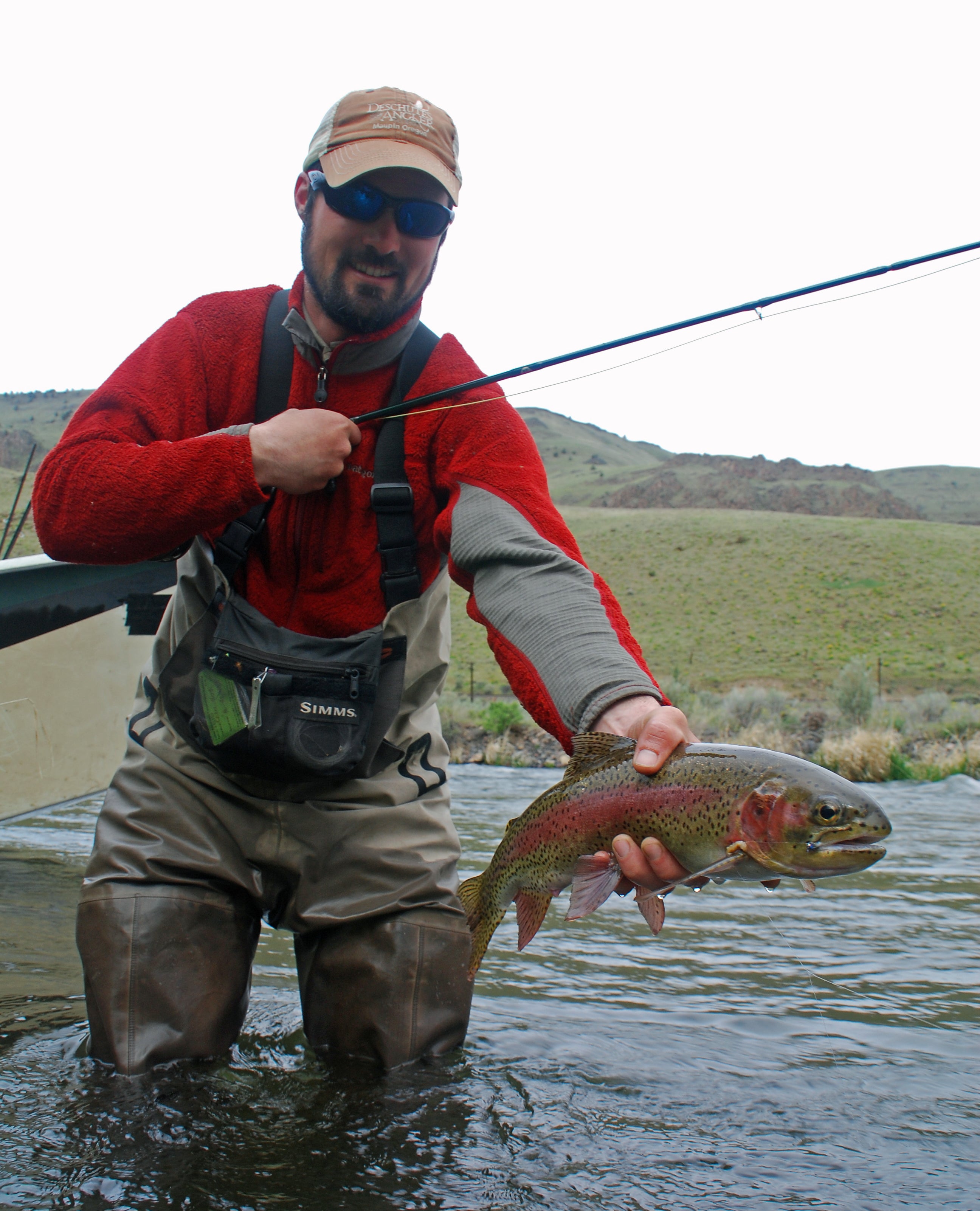Trout Fishing Report as Winter is Nigh

Trout fishing report – October 21
Update on the regulations: steelhead fishing is closed in the entire Deschutes River and will remain closed through the end of the year and probably through January, February and March. Salmon fishing is closed from Sherar’s Falls upstream and salmon fishing below Sherar’s Falls will close on November 1 for the rest of the year. No more pretending to be fishing for salmon when you are really fishing for steelhead. Thus ending the stupidest and least effective angling regulation ever created by ODFW.
From November 1 on, trout or whitefish fishing is the only option available on the Deschutes.
As the weather cools down the trout are really beginning to make a push towards their favored winter waters. Most will move out of the riffles and into the softer margins of the river where less physical effort is required to hold themselves in the strong current. Some will move into backeddies, others into deep pools with slow moving currents, and a few will stay in the big riffles but will tend to choose riffles or breaks with quick access to slack water.
The hatches are becoming fewer, but we still have good mayfly hatches happening in the mid-day. Tiny blue winged olives and slightly larger baetis imitations will work well on cloudy days – though you should see the hatch at some level on the sunny days too. The midges in the winter can also be thick and a surprising number of big trout are able to bulk up by eating itty bitty midges. Zebra midges in size 18-20 and smaller (if you dare) can be fished off a piece of 6X tippet in conjunction with a slightly larger tungsten bead head.
Here are the strategies to use while fly fishing the river in the winter months:
Dry fly fishing (when a hatch is present)
Dry-Dropper fishing (using a foam body dry like a chubby Chernobyl) in conjunction with a tungsten bead head dropper fly 2-3 feet or further below the dry. For best results on the dropper nymph, use 5X fluorocarbon tippet or smaller if your rod can cushion it.
Indicator nymph fishing – using one or two weighted nymphs under an indicator, sometimes incorporating the additional help of split shot to get your flies to the proper depth.
Tight line nymph fishing – without the indicator, tight line nymphing keeps you in tight contact with your nymphs at depth and allows you to see and feel the strike possibly sooner than you might with an indicator.
Euro Nymphing – This is tight line nymphing taken to the highest level. Using a specially designed Euro nymph rod, line, and leader, the angler fishes tungsten bead flies on or near the bottom of the river with far less drag and far more time “in the zone” thanks to the design of the leader. The leader is fine all the way from top to bottom, allowing the nymphs to quickly drop to the depths with little resistance. The tip of the rod is incredibly sensitive and light to allow the angler to cushion delicate tippet diameters.
Trout Spey or Swinging streamers – using either a single-handed rod or a light 2-3-4 weight two-hander, fishing with weighted sculpin or leech patterns swung or stripped through the water. Opportunistic trout will grab your big sculpin or leech pattern as it invades their holding water. This method can be highly hit or miss depending on the day, but can result in electrifying moments on the water.
We are set up to fully outfit you no matter the method you choose. Come on in and we will show you which patterns we have been using regularly on our guided trips.
If you want to spend a day on the water with one of our guides either learning one of these techniques or dialing in your technique on multiple disciplines, we can arrange for a guided trip any time from now through November.
We would normally be on the John Day River in November, but fishing is closed on the John Day for the rest of the year.











Thanks Amy- Informative and help full as always. Want to mention a technique I’ve not heard you speak of. High sticking a muddler minnow through a quick run. Have found it very effective on Keno section of Klamath, Owyhee and other big trout waters. Unweighted Muddler minnow, 1 or 2 split shot 12" above fly. lead through quick run 3-5ft. deep(often between boulders) Keeping tight line to fly. No fly line on the water. Wham! Best near some soft water downstream to play & land a big fish. In my experience, I find not setting the hook too hard will not scare him (her)into bolting into the main current right away. Electrifying is the word in this technique. And, just like dating,- catch and release. Best, J.